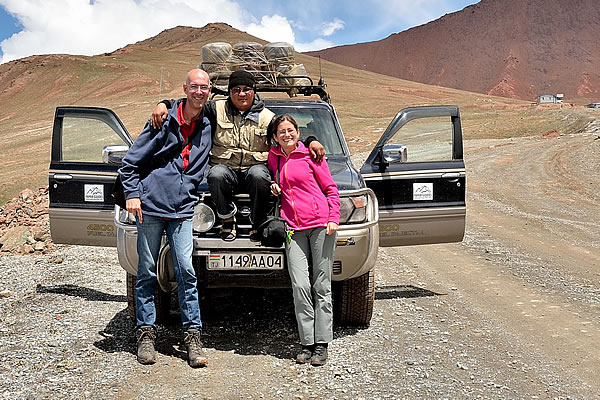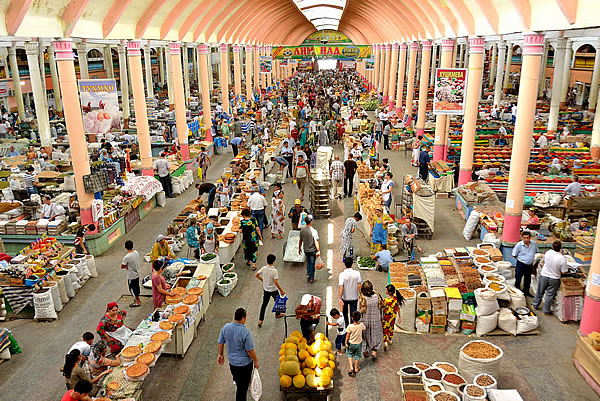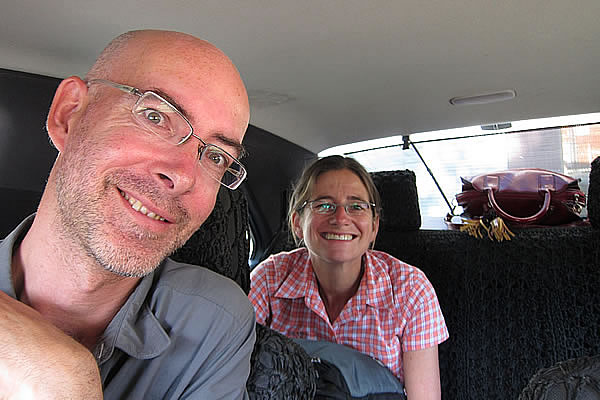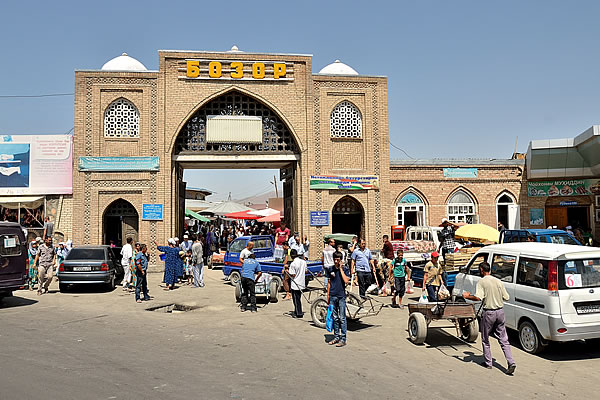English | Dutch |
|
| We finally saw Tajikistan | |
Osh (Kyrgyzstan) to Osh (Kyrgyzstan), July 2015
|
|
| |
|
Two times before we had been on our way to Tajikistan for a journey through the Pamir Mountains. Both times it did not happen. But this time, it eventually happened. On the backseat of the Nissan Patrol of our driver Shamil, we arrive at the border between Kyrgyzstan and Tajikistan. The border crossing went smoothly, partly because of the bribes paid by Shamil. When we ask him if it is normal to pay to corrupt border officials, he says yes without any hesitation. This is best for everyone, he says. Officials fill their pockets, I have less misery and tourists have minimum delay. When we asked him whether foreign travellers also have to pay to cross the border with a car with foreign license plates, he says no. Foreigners are much more assertive. They refuse to pay, ask for the manager or threaten to call the embassy or the chief of police in Osh and Bishkek for a complaint. But I can’t, says Shamil. I have to cross this border every month several times and when they hear that I have filed a complaint against them, I will be in a lot of trouble. "Kickback payments is best for everyone" is what he repeats one more time. The journey through the Pamir Mountains turns out to be fantastic. We have deliberately chosen for a private jeep with driver because we want to visit some places that are not accessible by public transportation. The Bartang Valley is such a destination (see the pictures of the Bartang Valley here). It turns out that this valley is the highlight of our visit. The jeep track is spectacular, the scenery fantastic and the level of desolation unprecedented. We often say to each other that this is not the type of track that we would dare to explore with our own jeep. The path is sometimes insanely narrow, the canyons terrifying deep and landslides have made the path in some places very difficult to drive. Our experienced driver was occasionally also worried about the state of the path and his vehicle, but eventually he drove us safely through the Bartang Valley. A few weeks later we were told that a large landslide in the Bartang Valley made the track impossible to drive for the time being. We had been there exactly on time. |
|
 |
|
Us and our driver on the border between Kyrgyzstan and Tajikstan |
|
Also the other parts of the Pamir Mountains are great. The Wakhan Valley for example, is a great destination for travellers who do not have their own wheels at their disposal. The transport connections are meagre here but available, there is permanent electricity and there are plenty of families who have rooms available for tourists. Some even have a shower. In the Wakhan Valley, the Pamir River forms the natural border between Tajikistan and Afghanistan. Normally, the Saturday border market in Ishkashim is a major tourist attraction for tourists, because here, both merchants from Afghanistan and Tajikistan meet to trade. However, when we were there, the market was cancelled due to security problems in Afghanistan. These problems mean that many Afghan traders could not travel to the market in Ishkashim and for that reason it was cancelled already for some weeks. After the Wakhan Valley we visited some remote settlements like a hunter camp (Keng Shiber) and a nomad camp (Kara Jilga). After two weeks we drove back to Kyrgyzstan again, and a beautiful trip came to an end. This journey through the Pamir Mountains met all expectations we had and is a great destination for anyone who likes to leave the developed world for a few weeks (see the pictures of the trip through the Pamir Mountains here). Once in Osh, we took a few days’ rest. We worked on the website, processed the photos, wrote in the diary and enjoyed the luxury that a larger city has to offer. We also printed a large number of photos that we put in a photo book to give to our driver Shamil, as thanks for the fabulous journey through the Pamir Mountains. After we recharged our batteries, we went back to Tajikistan. This time not to the Pamir Mountains, but to the western part of the country. To the cities of Khujand, Penjikent and the capital Dushanbe. |
|
 |
|
Ivonne and two Tajik girls in Dushanbe |
|
| We took a public bus from Osh to Batken, located on the border with Tajikistan. Here we want to cross the border to Isfara in Tajikistan and then on to Khujand. The drive to Batken is exciting because the road crosses an Uzbek enclave. It is only 10 kilometers, but officially you must have a transit visa for this stretch. The chance of being caught is small, especially if you are traveling by public transport, but if you get caught, you have an annoying problem. We took the risk and got on the bus with the idea that we'll see where it ends. But we were lucky. Kyrgyzstan, supported by the European Union, laid out a new road bypassing the enclave. So, without problems we arrive so in Batken, where we cross the border with Tajikistan without any hassle. Khujand, Penjikent and Dushanbe are great cities to visit. They are also very different from the towns and villages in the Pamir Mountains. In the western part of Tajikistan live the Tajik people. In the Pamir Mountains on the other hand, live mainly the Pamiri people and people with a Kyrgyz ethnic background. That makes the eastern and western Tajikistan basically two completely different destinations. In the western part of Tajikistan you will see relatively few tourists. Penjikent still attracts some travellers because of the Fan Mountains, but in Dushanbe and Khujand, you will probably not see any other foreigners. These cities aren’t very special, but still worth a visit if you want to see the other Tajikistan. After our visit to these three cities, we travelled back to Kyrgyzstan the same way as we came. So, after several previous attempts we finally succeeded. We have finally seen Tajikistan. |
|
 |
|
Us in Khujand |
|
 |
|
The fresh produce market of Khujand |
|
 |
|
Us in a shared taxi between Penjikent and Dushanbe |
|
 |
|
The entrance of the bazar of Penjikent |
|
 |
|
Our thanks to Shamil and Kurbanali, the heroes of the Bartnag Valley This picture shows them before and after the drive through the heavy Bartang Valley |
|
| <Previous weblog> | |